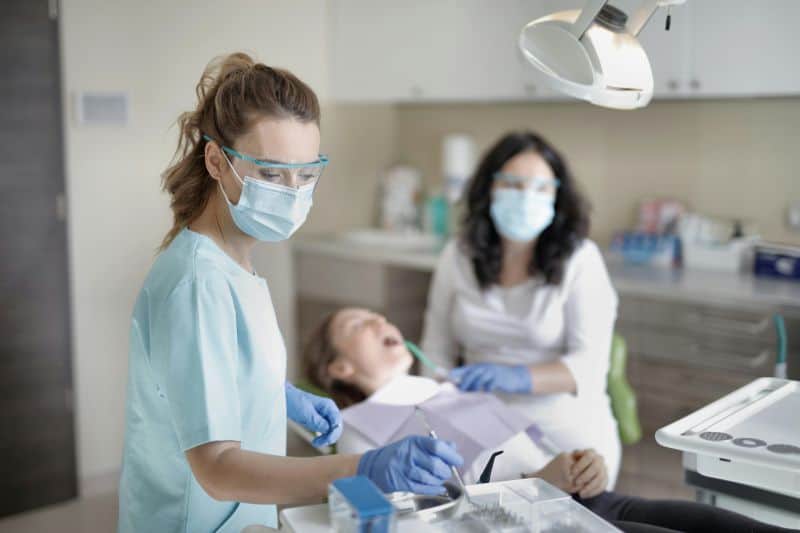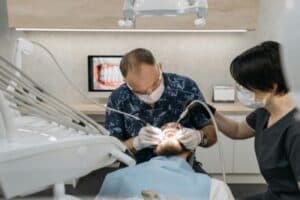
30 Sep Back-to-School Dental Checklist: Keeping Kids’ Teeth Healthy
Back-to-School Dental Checklist: Keeping Kids’ Teeth Healthy
A healthy mouth doesn’t just mean a pretty smile—it’s also essential for your child’s academic performance. Dental pain and oral health issues are among the leading causes of school absences. According to the American Dental Association (ADA), children with poor oral health are nearly three times more likely to miss school due to dental pain.
Beyond attendance, kids who struggle with dental problems may also have trouble concentrating or participating in class. When children feel confident in their smiles, they’re more likely to speak up, interact socially, and maintain a positive self-image.

How to Prepare Your Child’s Teeth Before School Starts
Here’s what you can do before the first school bell rings:
-
Schedule a dental check-up. Late summer is a great time for a routine cleaning.
-
Update dental records. Ensure your child’s dentist has current x-rays and history.
-
Reinforce daily habits. Re-establish morning and night routines that include brushing and flossing.
-
Discuss oral health. Talk to your child about the importance of dental care and its impact on school life.
Daily Dental Hygiene Routine for Kids
Consistency is key when it comes to dental hygiene. A routine that your child can follow easily will make a big difference throughout the school year.
Morning Routine: Brushing Right Before the Bus
-
Brush teeth for 2 full minutes using fluoride toothpaste.
-
Use a soft-bristled toothbrush and replace it every 3 months.
-
If your child wears braces, make sure they clean around brackets properly.
-
Finish with a child-safe mouthwash to kill lingering bacteria.
Evening Routine: No Skipping the Night Brush!
-
Floss daily to remove food particles between teeth.
-
Encourage brushing after dinner, not just before bed.
-
Set up a reward chart for younger children who follow the routine regularly.
-
Consider a fluoride rinse if recommended by your dentist.
Top 5 Dental Supplies Every Kid Needs in Their Backpack
Keeping dental health a priority during school hours helps reinforce good habits and prevent oral issues. Equip your child’s backpack with a few essential items to maintain their smile throughout the day. A travel-size toothbrush allows for quick cleaning after lunch, while a mini fluoride toothpaste supports enamel strength and helps fight early tooth decay.
Dental floss picks make it easy to clean between teeth, especially after sticky snacks. Sugar-free gum made with xylitol can stimulate saliva production and reduce plaque buildup when brushing isn’t possible. Lastly, mouthwash strips are a convenient way to freshen breath and kill surface bacteria. It’s important to teach your child when and how to use each of these tools responsibly, so they can develop lifelong habits that keep their teeth healthy.
The Role of Diet in Your Child’s Dental Health
What your child eats can either support or sabotage their oral hygiene.
Best School Snacks for Strong Teeth
-
Cheese – balances pH and provides calcium
-
Apple slices – act like a natural toothbrush
-
Carrot sticks – rich in vitamin A
-
Nuts – low in sugar, packed with nutrients
-
Water – flushes out food particles
Foods to Limit or Avoid
-
Sticky candies (e.g. taffy, gummies)
-
Sugary sodas and juices
-
Chips that leave residue in teeth
-
Dried fruits high in concentrated sugar
Consider packing lunches that are both tooth-friendly and delicious!

Choosing the Right Dentist for Back-to-School Checkups
Finding a pediatric dentist with experience and a friendly demeanor helps ease your child into routine dental visits. Look for:
-
Positive reviews and family-friendly offices
-
Options for sedation or behavior management
-
In-network with your insurance
-
Flexible scheduling around school hours
You can search trusted dental professionals at MouthHealthy.org.
Understanding Preventive Dental Treatments for Kids
Preventive care is your first defense against cavities and other dental issues.
Common treatments include:
-
Dental sealants – applied to molars to prevent decay
-
Fluoride varnish – strengthens enamel and prevents early-stage cavities
-
Professional cleanings – remove plaque and tartar build-up
-
Orthodontic screenings – early detection of alignment issues
The Connection Between Oral Health and Academic Performance
Studies have shown a direct link between oral pain and poor academic outcomes. Children who experience dental discomfort may:
-
Have difficulty focusing
-
Score lower on standardized tests
-
Avoid social interaction
-
Display behavioral problems
Supporting your child’s oral health is an investment in their educational success.
Addressing Dental Anxiety in Children
Dental visits can be scary for some kids. Try these tips:
-
Role-play dental visits at home
-
Read storybooks that explain dental checkups
-
Choose a “tell-show-do” dentist
-
Reward brave behavior post-visit
-
Avoid negative words like “pain,” “hurt,” or “needle”
Reducing fear now makes dental care easier for life.
Common Back-to-School Dental Problems and How to Avoid Them
Watch out for:
-
Cavities from school snacks
-
Bad breath due to skipped morning routines
-
Toothaches caused by untreated decay
-
Broken braces or retainers
Solutions include:
-
Keeping floss picks and gum handy
-
Regular hydration
-
Mouthguard use for sports
Tips for Parents to Encourage Good Oral Habits at Home
-
Be a role model—brush together!
-
Use timers or dental apps to make brushing fun
-
Reinforce positive behavior with small rewards
-
Talk about the “why” behind brushing and flossing
-
Set reminders for dental appointments

FAQs: Back-to-School Dental Care
1: At what age should my child start seeing the dentist?
1: As early as their first birthday or when the first tooth erupts, according to the ADA.
2: How often should my child visit the dentist?
2: Every six months for a cleaning and checkup unless otherwise recommended.
3: What kind of toothpaste should kids use?
3: A fluoride toothpaste that is age-appropriate and ADA-approved.
4: Is chewing gum okay for kids’ teeth?
4: Sugar-free gum with xylitol can actually help reduce bacteria and stimulate saliva.
5: Do baby teeth really matter if they fall out?
5: Yes! Healthy baby teeth help with chewing, speaking, and guiding adult teeth into place.
6: How can I tell if my child is brushing correctly?
6: Use disclosing tablets occasionally to reveal plaque, or supervise their brushing routine.
Conclusion: Starting the School Year with a Smile
A healthy smile can be a child’s greatest back-to-school accessory. From setting routines and packing the right snacks to scheduling that important checkup, every step you take contributes to your child’s confidence and well-being. By following this checklist, you’re not just fighting cavities—you’re setting your child up for academic and social success all year long.


Sorry, the comment form is closed at this time.